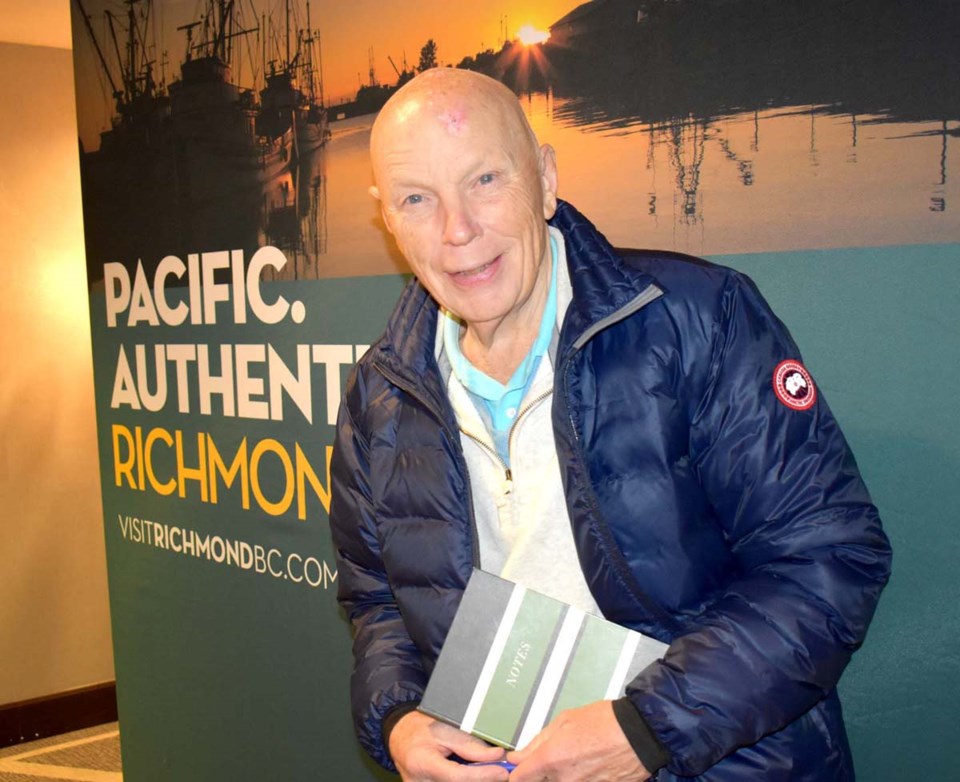Preparing for every possible scenario and taking into account every single variable that can affect each of these scenarios — it’s this detailed thinking that Story Musgrave brings to every job he’s done, whether it’s as a trauma surgeon or as an astronaut.
Musgrave, the veteran of 25 space missions, a former marine, Korean War veteran, surgeon and NASA astronaut, was at the Tower Crane Conference, put on by WorkSafeBC on Wednesday at Richmond’s Sheraton Vancouver Airport Hotel.
As an astronaut, Musgrave said he brought “multi-disciplinary synergy thinking” to every spacewalk, resulting in a highly choreographed mission.
It’s more than just going through a book and checking off a list, he explained. Everthing is carefully rehearsed.
“When I go out that door, me and my tools are doing a dance — I’m a ballerina,” he said.
Musgrave told the Richmond News his message at the crane conference is to “raise the bar” when it comes to safety, identifying all factors that will affect the outcome.
“Wherever you want to go, there are factors that will help you get there and factors that will stop you,” he explained.
This way of thinking comes from applying mathematics, complex variables and multi-variable statistics, something that can be applied to a wide variety of critical operation disciplines.
Operating a crane is a high-risk operation that depends on human activity, like the airline industry, Musgrave explained, therefore, it’s necessary to plan for every possible scenario to avoid making mistakes.
When Musgrave worked in trauma surgery, he taught his team to be laser-focused on two things: the heart and the head to stabilize the patient. He taught them to work like a pit crew changing tires at a Nascar race in seconds instead of just waiting for doctor’s orders.
In his work with the National Transportation Safety Board, he works to see what led someone to make a mistake and then to analyze it to avoid making the same mistake again.
“See the future before it happens – this is the discipline I bring as a problem solver,” he said.



